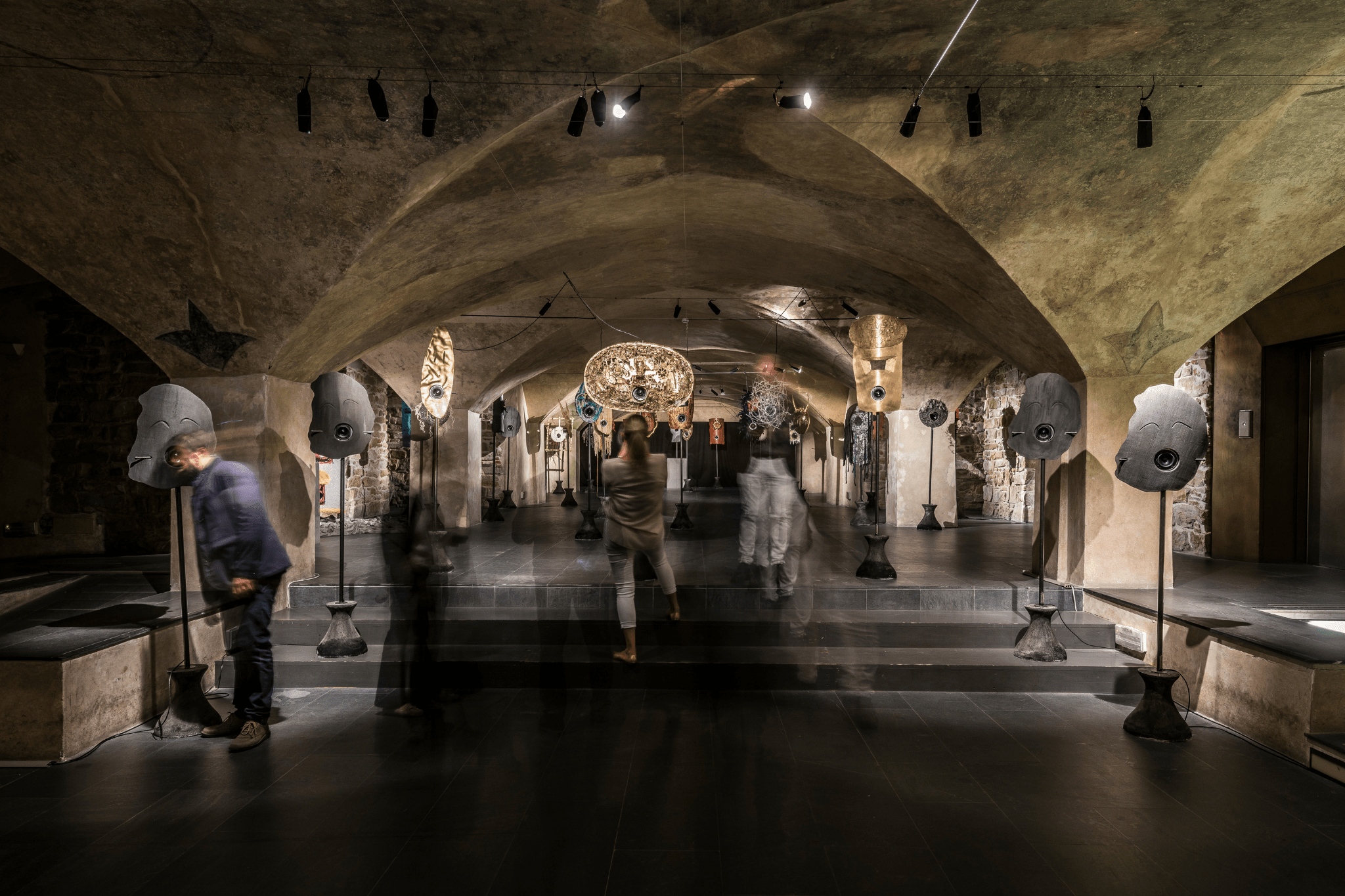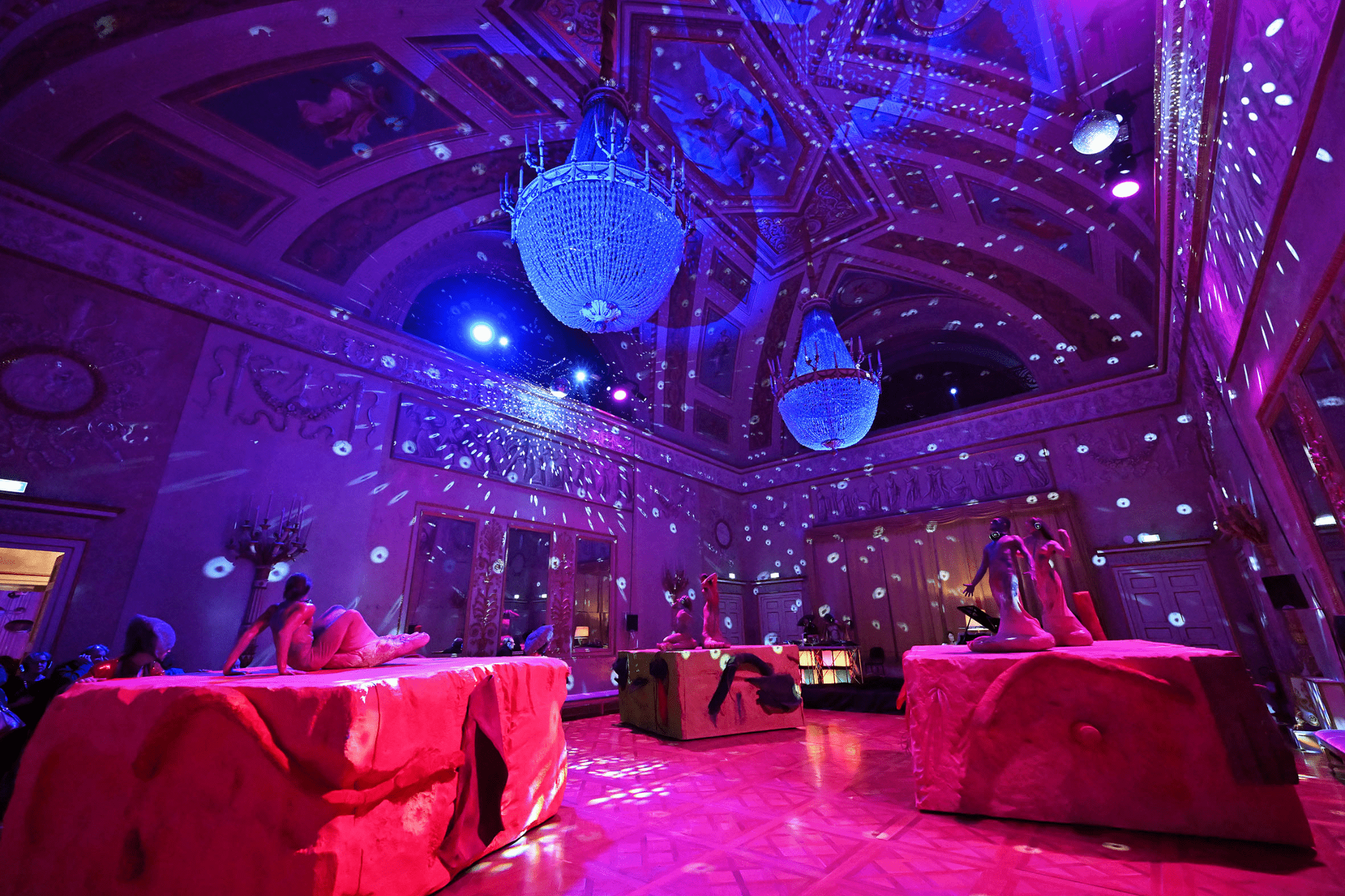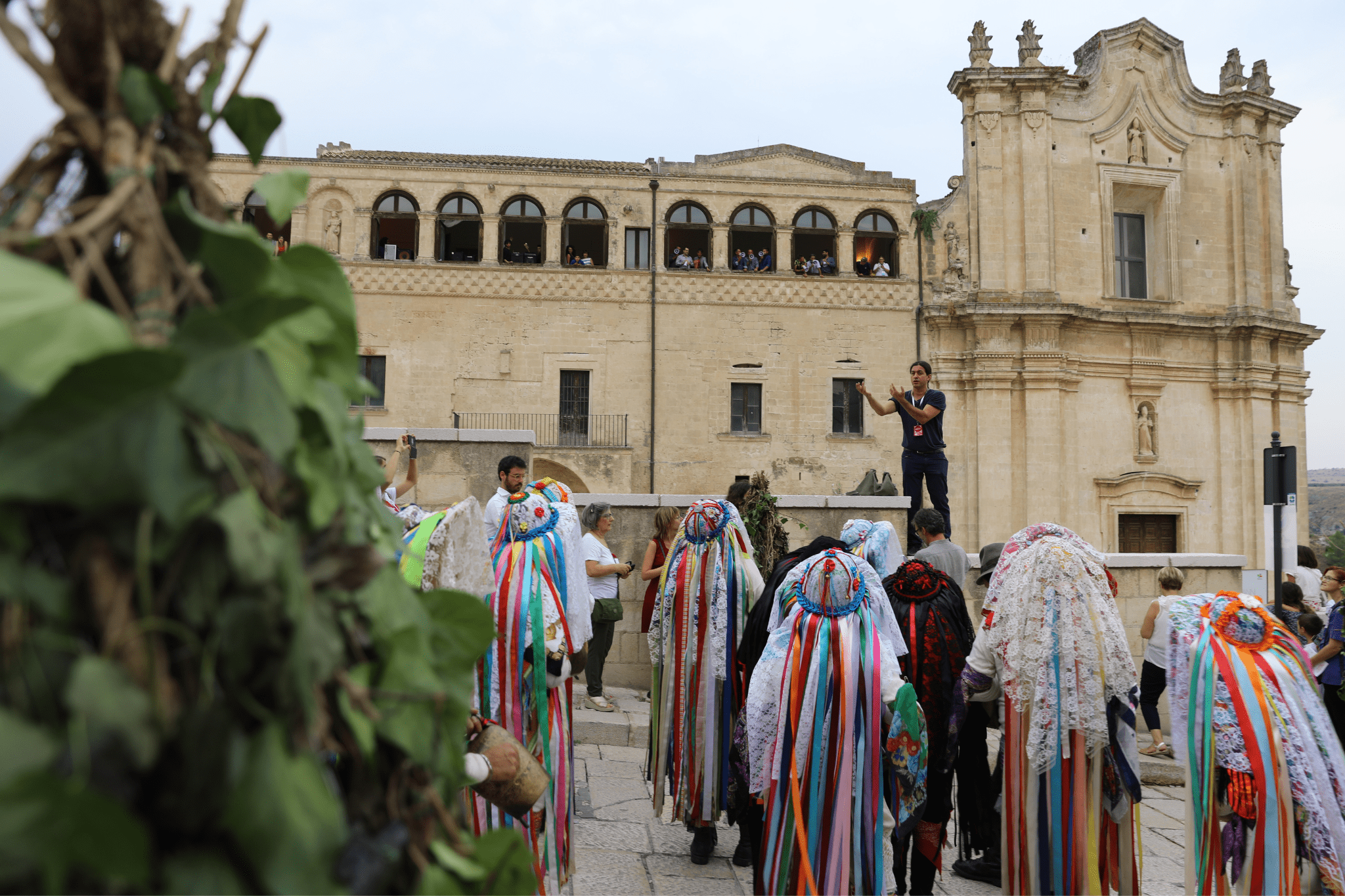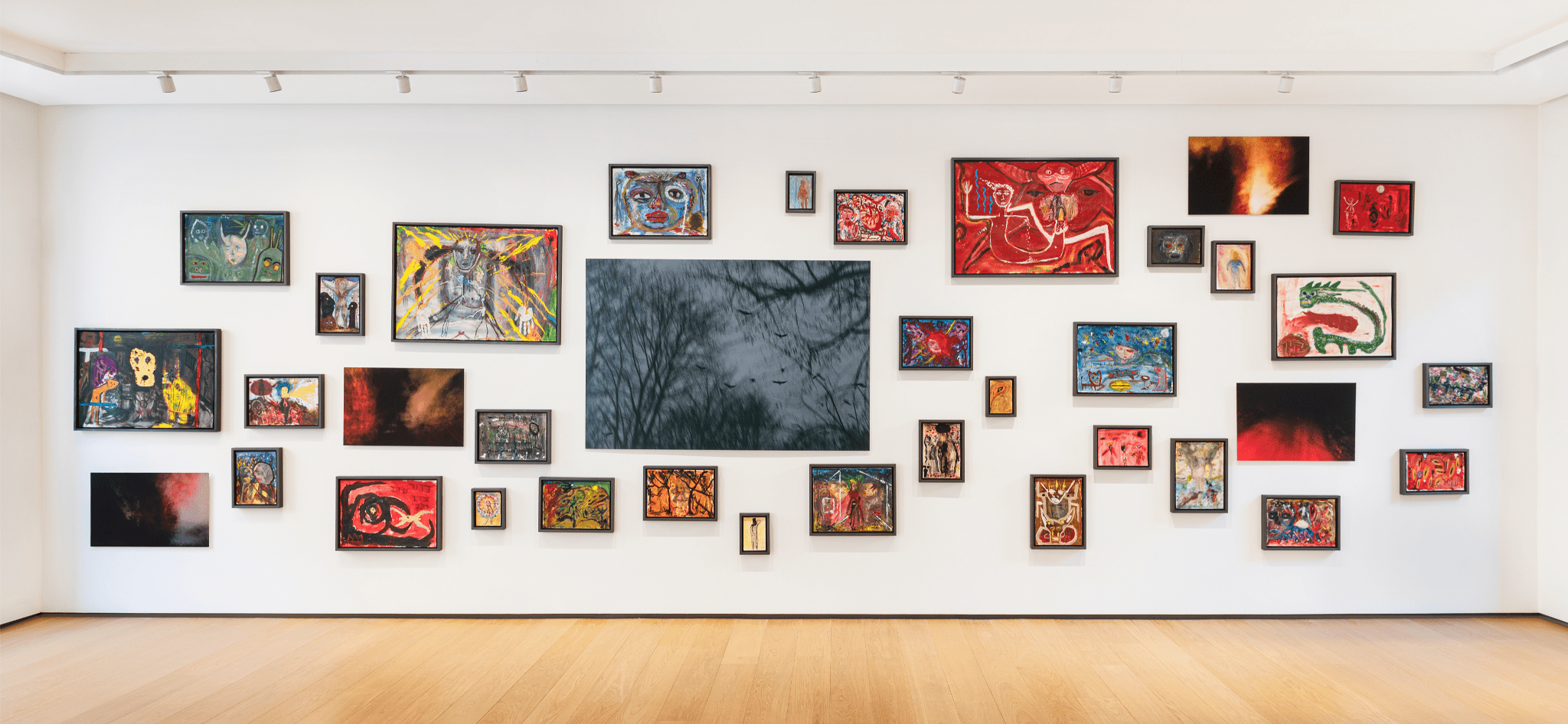
In your extraordinarily varied work – concerts, performances or “music rituals”, works of video art, photography, paintings, sound sculptures or installations – it seems that you are constantly preoccupied with the idea of removing the “false frontiers” between art genres. If you were to put it in words, how would you define your immersive projects, that aim to go far beyond the conventional art categories?
First of all, I must emphasize that the development and transition between various artistic languages is not actually a conscious choice, but rather an evolution in my human and artistic path. It all started with the influences of the multicultural and multi-layered density of Jerusalem, the city where I was born and where I grew up, and where, for the first time, I got to know the world of music, of speech, and of the theatre. Subsequently, after a period as a classical soloist, I began to include visual elements in my stage works. Since 2008, I have defined these works as sound icons. I began to approach music as a sound and material element; this is how I came to work with sound installations, video works and later also photography, sound sculpture and painting. I think that the root of art is closely linked to rites, and since ancient times rites have been complex works, including performance, sound, and visual and scenic elements. Only later did the separation between arts begin. For me, creation starts from an instinct. I start from a “bow”, from a project, from the camera and then I move on to the more concrete artistic material. At the same time, I think that some common roots connect all my works: man, nature, mystery, the exploration of a submerged truth, the will to live my work without compromise. In the end, for me, whether my work is beautiful or not, or what style it refers to, is not a priority.
In November 2021, you presented Human Signs, a global participatory project involving another 213 artists from 50 countries, at LOOP Barcelona. On that occasion, you created an immersive space where every spectator could face his or her own frailties and fears, in a sort of mise en scène of our emotional world and the shock of forced isolation we experienced during the pandemic. How would you describe the reaction of the public and what did this participatory work reveal about our life and perception of the last two years?
I think Human Signs is deeply connected to our “animal being”, to our instincts and desires, vulnerability and emotionality, and to our being humans who pray, tremble, and need contact. In Human Signs the score is nothing more than an accompaniment to this vulnerability, to getting naked, despite this not being a physical nude but an emotional nude. The idea for this work came to me during the first lockdown, when I felt that nothing real was coming out of the contrasting worlds that coexisted within me: loneliness, uncertainty, sadness, fear, colliding with the power and beauty of the nature that resisted. I felt that if I didn’t find a way to get all of this out, I would explode, and that’s where my first human sign emerged: the chant, the cry, the mantra. The viral aesthetics was sent like a message in a bottle to various parts of the world, linking the two most primal human expressions: voice and gesture. The work-operation was unfolded initially online, then physically, taking part in Manifesta 13 in Marseille, and in the Loop Festival in Barcelona. At this last exhibition I presented a dual work: on the one hand, a polyptych of testimonies synchronized by the cantus firmus, and on the other, domestic grids created with objects of all kinds, each with its own identity. The public experienced and observed the installation. The reaction was very strong, some people stayed for hours, others cried. The exhibition included drawings I made with chalk; iconographies related to the months of lockdown due to Covid-19. The aim was to give voice to something that we have all been through, and so, in some way, the exhibition space also became a place for healing and listening. Covid has revealed our ability to connect, and for me this is a watershed between not compromising and revealing ourselves, getting involved and being bare in art, removing all types of filters. Now what I want, I do.
Music – expressed with your own compositions, operas, dance, performances or sound sculptures – lies at the very base of your artistic research and seems to be the secret lifeblood that links all your other forms of art into a unique, experiential body of work. Tell us more about your latest compositions and how you think these last two years have impacted your music.
The music part of my production can be divided into 4 categories: 1- the work with classical musicians, who have followed an academic path of excellence; 2- the involvement of the “guardians” of extra-European traditions, sometimes oral and ancient, with whom I have collaborated with (among them are the Samaritans, the Kazakh nomads, Mongolian and Sardinian singers); 3- electroacoustic music and electronic sound, which can be both synthetic and true and subsequently elaborated; 4- the “rite”, that is the work with vocal masses, with non-professional musicians, to create choirs that use voice as a primordial expressive instrument, which since 2011 I have called Crowd Music. Often these various categories overlap and mix. For instance, something that belongs to both the second and the fourth category is the element of revealing oneself. In the Western paradigm, there is a constant distance between the symbol and what it symbolizes. Often the tragedy is not put on stage, but the symbol of tragedy is. What is tragic happens in the background, and from this comes the term “obscene”: that which manifests itself outside the scene. It’s not sadness, anger, tragedy that are brought to the stage, but a sublimation of these emotions. In extra-European culture, the performer becomes the thing, the wailer becomes the sadness, the mourning; the shaman becomes the animal. So, when I work with non-artists, through the use of voice and sound the final work becomes a mirror of an inner truth linked to memory or to the moment, while with classical musicians I have done immense work also creating empathic scores containing iconographies of visual stimulations that create a different involvement from that of the execution. The concept of execution does not belong to me, and this becomes obvious in one of my latest works, Silent Quartet, which will premiere in autumn 2023 at Teatro Comunale di Modena. Before the performance, the quartet goes into a process of artistic confinement by studying my classical score About Birds – which lasts two hours – in which, slowly, in an immersive and dreamlike performance process, the musicians become birds. This process is also documented through films and photographs, which become part of the work. It’s like a work within the work, questioning the concept of intimate and public sphere. Two examples that deviate from this are the work done with Daniel Libeskind for the London Design Festival entitled Meditations on Theatrum Mundi, in which I re-read Libeskind’s series of drawings made in the 1980s, where he imagined a spiritual – not viral – epidemic that affects cities. I read them like a score, using prerecorded materials of my works for accordion, to create a 50-minute electroacoustic sound work. This project rings out another side of my creativity, which has to do with the desire to encode, decipher and define a sound space as an environment, as the light does in a room. Another example that I would like to mention is the work I wrote for a rondalla – pizzicato string instruments ensemble from the Philippines entitled Night Been. This work comments and somehow takes inspiration from animist beliefs and the cult of spirits that exist in many of the islands in the Philippines; a place where I have been three times and where I created works involving traditional musicians. This is a classical score about something that stems from the roots, it’s very mysterious, and extremely visceral.
What is your perspective on the short and long-term future? How do you imagine your art evolve in the next years?
In the short and medium term, in 2022/2023, numerous activities are planned, ranging from exhibitions in galleries and museums, from theatrical performances to musical works; it will be a very busy period, on the verge of saturation, but full of challenging projects that will surely make me evolve. Each work to which I devote my thoughts and my hands, automatically becomes the most important and central thing in my life, almost like an obsession, and a desire to emerge and disappear within my work appears at all times. I think that after many years in which I was perceived as a sort of challenge both for the world of music and that of art, I have finally managed to become an understandable and decipherable element. I am also very happy not to have compromised myself and my art in the past, so much so that now my works are requested by very different worlds, which is always a new test. In parallel, there is also a whole ethical work that I am carrying out with various actors that deal with the dissonances and difficulties of today, including UNHCR. In the future, I hope to keep walking and follow this path, and I hope I will always be able to carry out projects as I dream of them, without compromise. The thing I most want for myself is to feel free, expressing myself fully and living every moment in this journey in the hic et nunc: this is perhaps the most important lesson I have learned in the last two years.
PHOTO CREDITS
Yuval Avital © Lessico animale. Mysterion n.171, Terme di Caracalla, Roma, 2023
Yuval Avital © About Birds, Quartetto icono-sonoro n.2, Teatro Comunale Pavarotti-Freni, Modena, 2023 Ph Rolando Paolo Guerzoni
Yuval Avital © Foregin bodies N3, Icon n.79, 2022
Yuval Avital © foto di scena di Fuga Perpetua – Opera icono-sonora n.5, Teatro Comunale Pavarotti-Freni, Modena, 2016 Ph. Max Farina
Yuval Avital © installation view Alma Mater, installazione icono-sonora, Fabbrica del Vapore, Milano, 2015 Ph. Rsanzone
Yuval Avital © installation view Human Signs Loop/ed, Espronceda, Barcellona, 2021 Ph. Facundo Manocchio
Yuval Avital © installation view Nephilm, Museo Marino Marini, Firenze, 2019 Ph. Massimo Pacifico
Yuval Avital © La Discoteca degli Sciapodi, Mostrario Parte I, Teatro Regio, Parma, 2022 Ph Roberto Ricci
Yuval Avital © Urla, Matera, 2019 Ph. Francesca Petretti
Yuval Avital © installation view ETERE, Building, Milano, 2021 Ph. Leonardo Morfini
Yuval Avital © frame da Icon-sonic Postcards n.2 – Postcards from Rome, Macro Asilo, Roma, 2018-2019
_
Yuval Avital © making of Labirinto, un dipinto di m 125×2,5 realizzato in dialogo con laboratorio di scenografia di Teatro Due, Parma, 2023 Ph. Andrea Morgillo
































